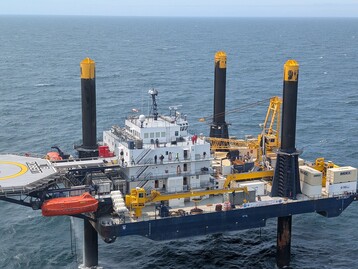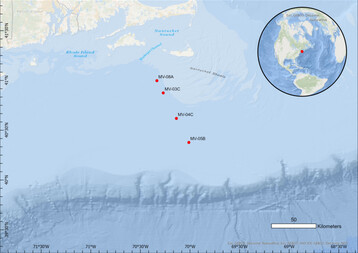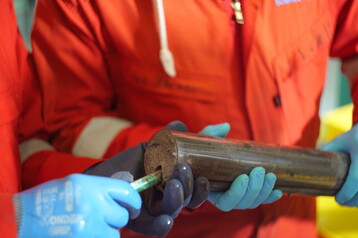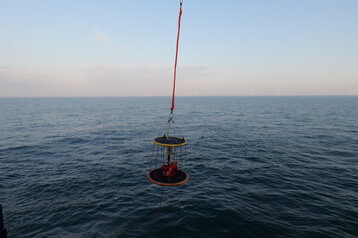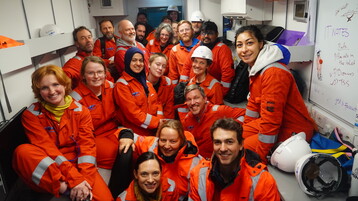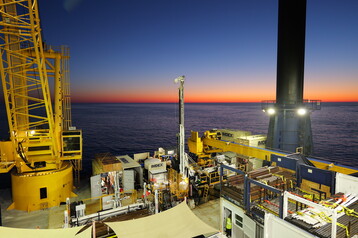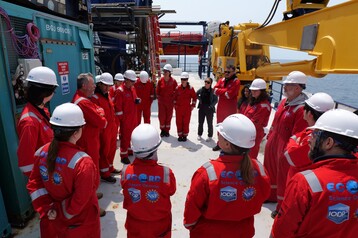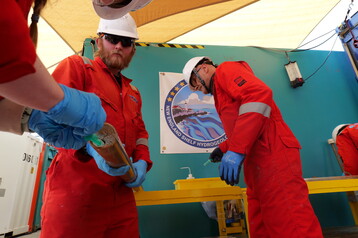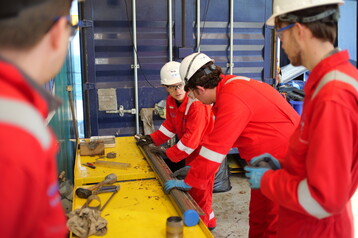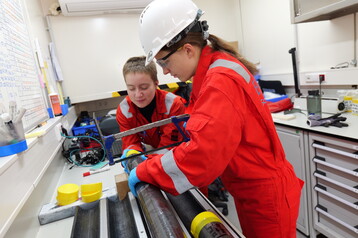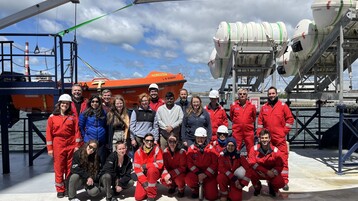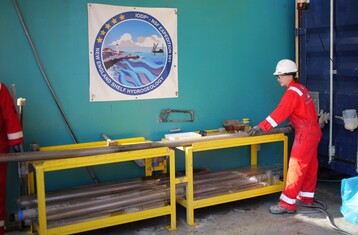Expedition To Drill For Freshwater Off Nantucket Completed With Promising Results
JohnCarl McGrady •
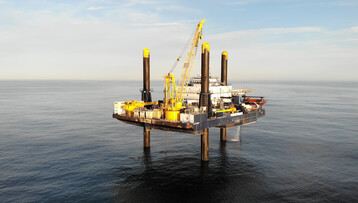
Buried under the ocean floor off the coast of Nantucket are mysterious aquifers full of freshwater. Nobody knows how they got there, and almost no one has ever explored them to find out. Until now.
For the last 74 days, a team of scientists working with the International Ocean Drilling Programme and the National Science Foundation has been collecting samples of sediment cores from the bottom of the ocean near Nantucket and the strange water deposits stored within them, deep below the surface. It is the first expedition that has managed to collect water and sediment samples from beneath the ocean on the New England shelf. The mission is now complete, and researchers believe their preliminary findings are promising.
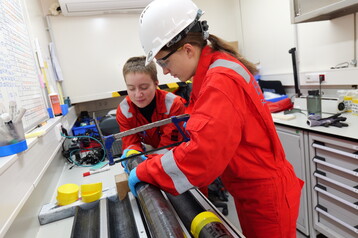
“We set out with lofty goals to understand the origin and age of this offshore freshened groundwater system through sampling of sediment and water in a difficult drilling environment consisting of sand and mud. With great teamwork among the science team, the technical staff, and the drilling crew, we managed to get great samples including through multiple groundwater pumping tests,” Brandon Dugan, a co-chief scientist of the expedition said. “Those tests were…a first for scientific ocean drilling.”
The existence of sub-seafloor groundwater systems was first revealed during previous surveys by the U.S. Geological Survey's Atlantic Margin Coring project, which failed to discover petroleum but did provide evidence of freshwater deposits beneath the sea floor.
While there have been studies attempting to understand the offshore freshwater system along the northeast coast of the United States, this expedition was the first of its kind, and could provide unprecedented insight into the aquifers.
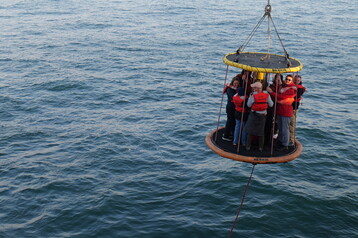
Now that the offshore portion of the expedition is complete, the team is transitioning to onshore operations in Bremen, Germany, where they will split, sample and analyze the sediment cores and the water collected.
“Some of the groundwaters were remarkably dilute with salinities around and even below 1 psu (practical salinity unit),” co-chief scientist Karen Johannesson said. “Seawater averages about 35 psu. Groundwaters with total dissolved solids less than 1[psu] are fit for human consumption as a drinking water resource….I look forward to learning more about when these groundwaters were recharged to these sediments and what the past climate was like when these groundwaters entered these offshore aquifers.”
A year after the team completes their research, the cores will be made accessible to the broader scientific community for further study.
The $26 million project - which includes 29 scientists representing 13 different countries - is being funded by the International Ocean Drilling Programme as well as the U.S. National Science Foundation.
All photos below by Erwan LeBer:
